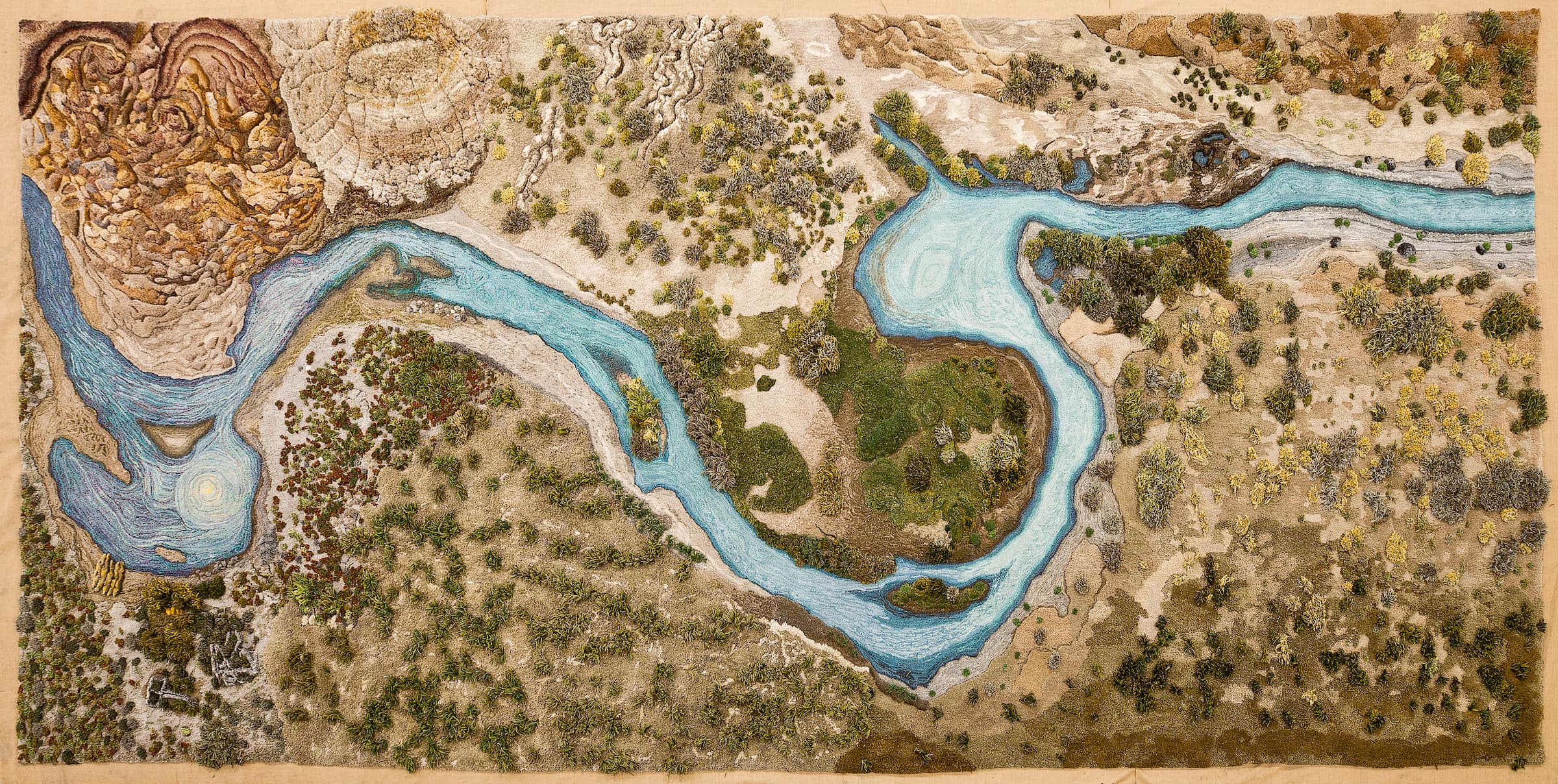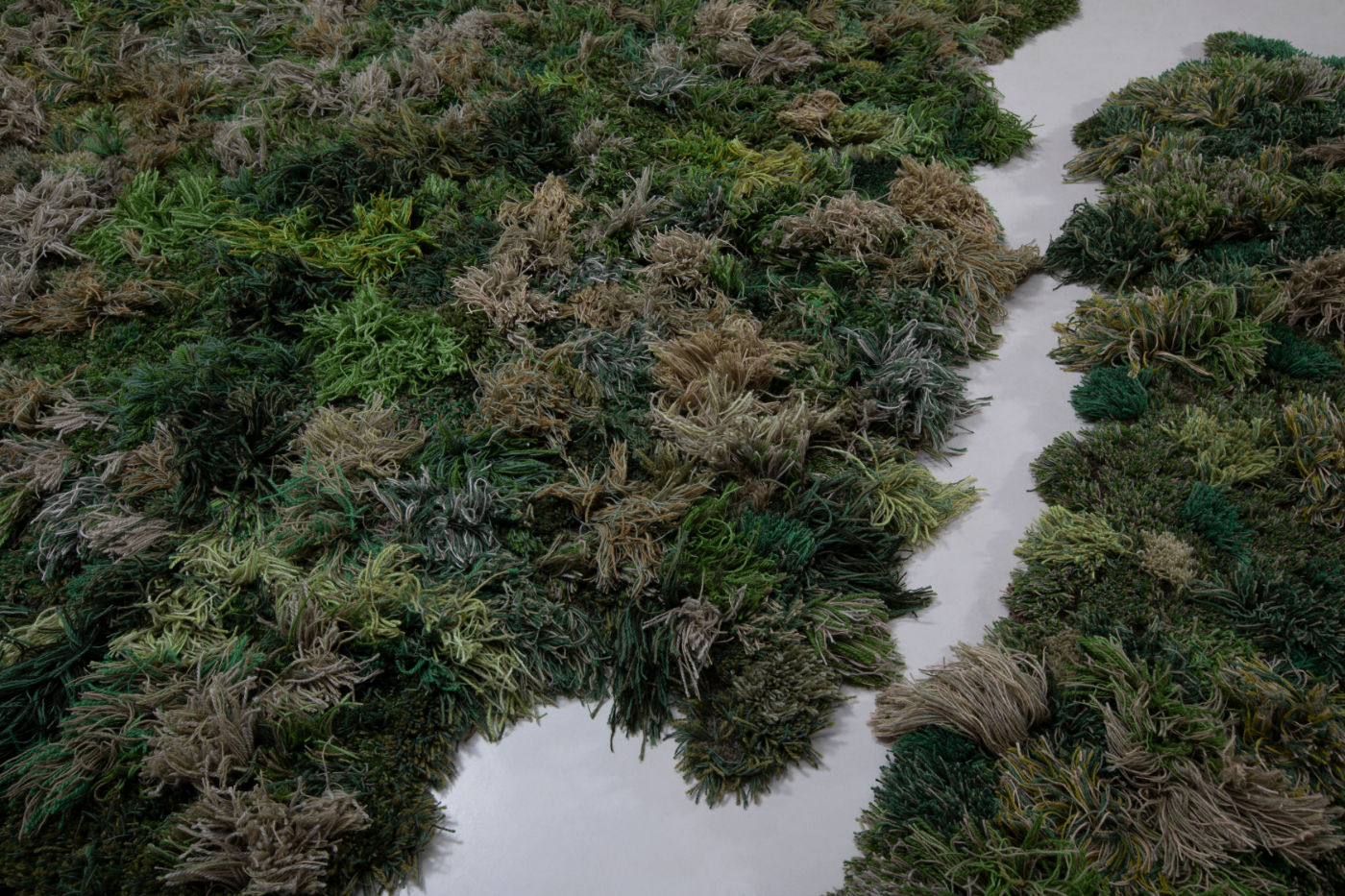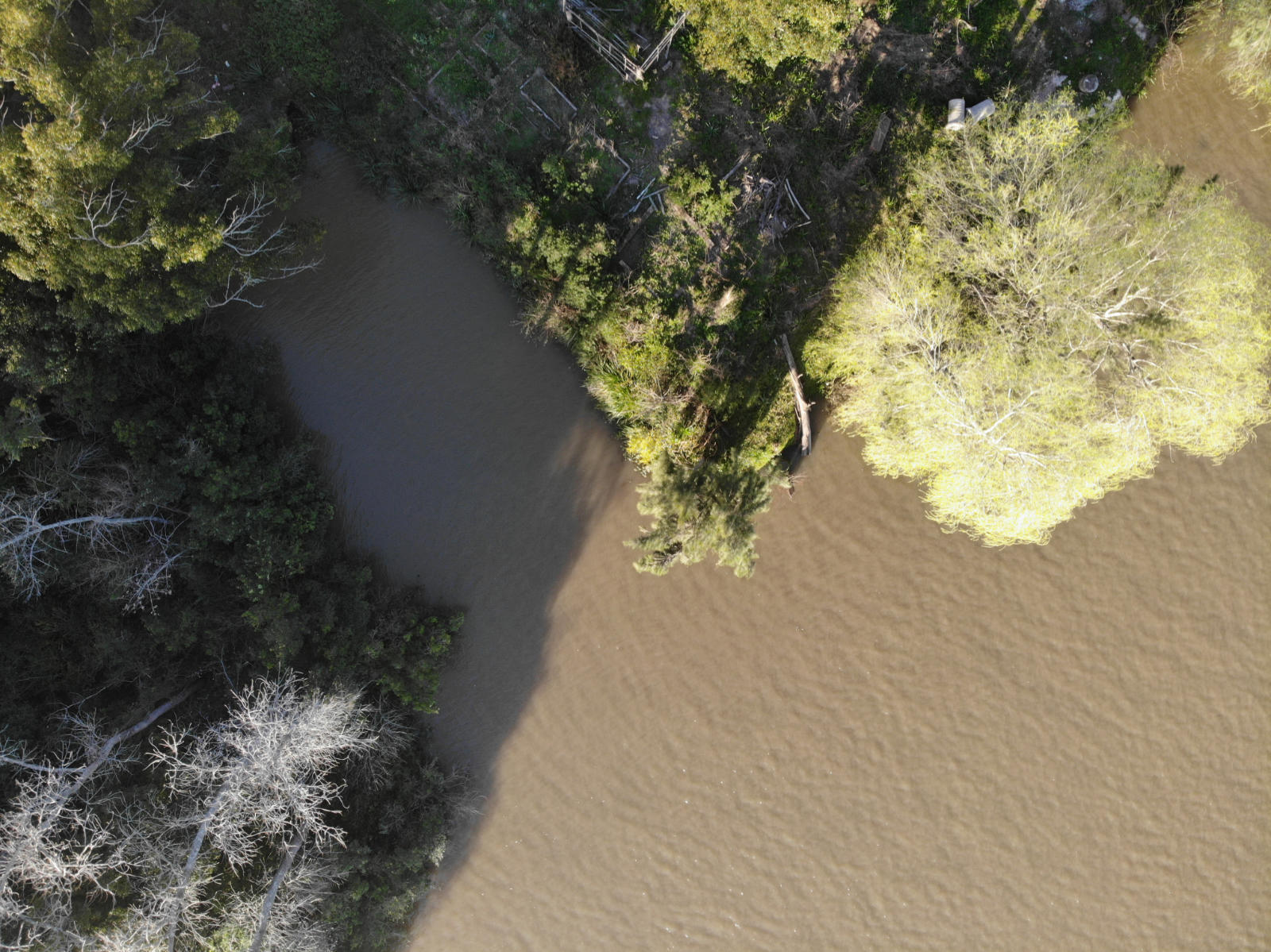Alexandra Kehayoglou’s hand-tufted, textural rugs are slow and intimate representations of history and landscape, ranging in size from individual prayer rugs to carpeting entire rooms. Kehayoglou considers her laborious and precise weaving process a connection to an extensive ancestral tradition, especially to her grandmother, who immigrated to Buenos Aires from Isparta, in present-day Turkey, with few possessions and a loom. Simultaneously, the lush terrains of Kehayoglou’s textiles connect both the artist and the viewer to nature in her translation of topography, water, vegetation, and memory into tactile piles of richly colored wool yarn.

Many of Kehayoglou’s chosen landscapes are threatened by economic and industrial pressures and exploitation, and her rugs function as both a memorial and a call for environmental awareness. One of her most monumental works depicts the Santa Cruz River, Argentina’s last glacial river and a sacred space for the Mapuche people, where two hydroelectric dams are planned for construction (fig. 1). To become familiar with these landscapes Kehayoglou embarks on extended research trips where she takes photographs, makes sketches, and color matches yarn samples.1 For 2023’s Bajío (Lowland), the artist drew on a more prolonged and encompassing type of research: Kehayoglou and her family moved to a small island in the wetlands during the COVID-19 pandemic. Immersed in the landscape, Kehayoglou witnessed firsthand the ecological disturbances in the region, as well as the perseverance of nature. The specific area represented by Bajío (Lowland) exemplifies this, as the river carries seeds of plants from the denser northern wetlands, depositing them into a changing landscape. The patches of texture and color in Bajío, re-created in her typical loving detail, can be viewed as a conversation between Kehayoglou and the land, a process the artist describes as “decipher[ing] those messages that would allow us to transform unbearable loss into hope” (cat. 40 detail and fig. 2).2


Kehayoglou’s depictions of small and quotidian portions of the wetlands emphasize their unexpected complexity and beauty in what the artist considers a type of activism that, like a rug itself, is “silent [and] absorptive.”3 For many people, the idea of a rug is rooted firmly in the domestic sphere, an aspect of the home. Kehayoglou’s rugs expand the home to encompass threatened places and landscapes, a rejection of the separation between people and nature and a call to treat the earth with the same care and love as our own most treasured spaces.
Kit Bernal
-
NGV Triennial, “Alexandra Kehayoglou,” September 18, 2017, video, https://www.youtube.com/watch?v=aFWdvCfDIJw&list=PLcKLs-YRRMFN1ygReysxN9s3XRr8GPxVu ↩︎
-
Nina Azzarello, “Textile Terrains: Alexandra Kehayoglou on Weaving Memories of Forgotten Landscapes,” Designboom, May 21, 2021, https://www.designboom.com/art/textile-terrains-alexandra-kehayoglou-weaving-memories-forgotten-landscapes-05-21-2021/. ↩︎
-
Ibid. ↩︎